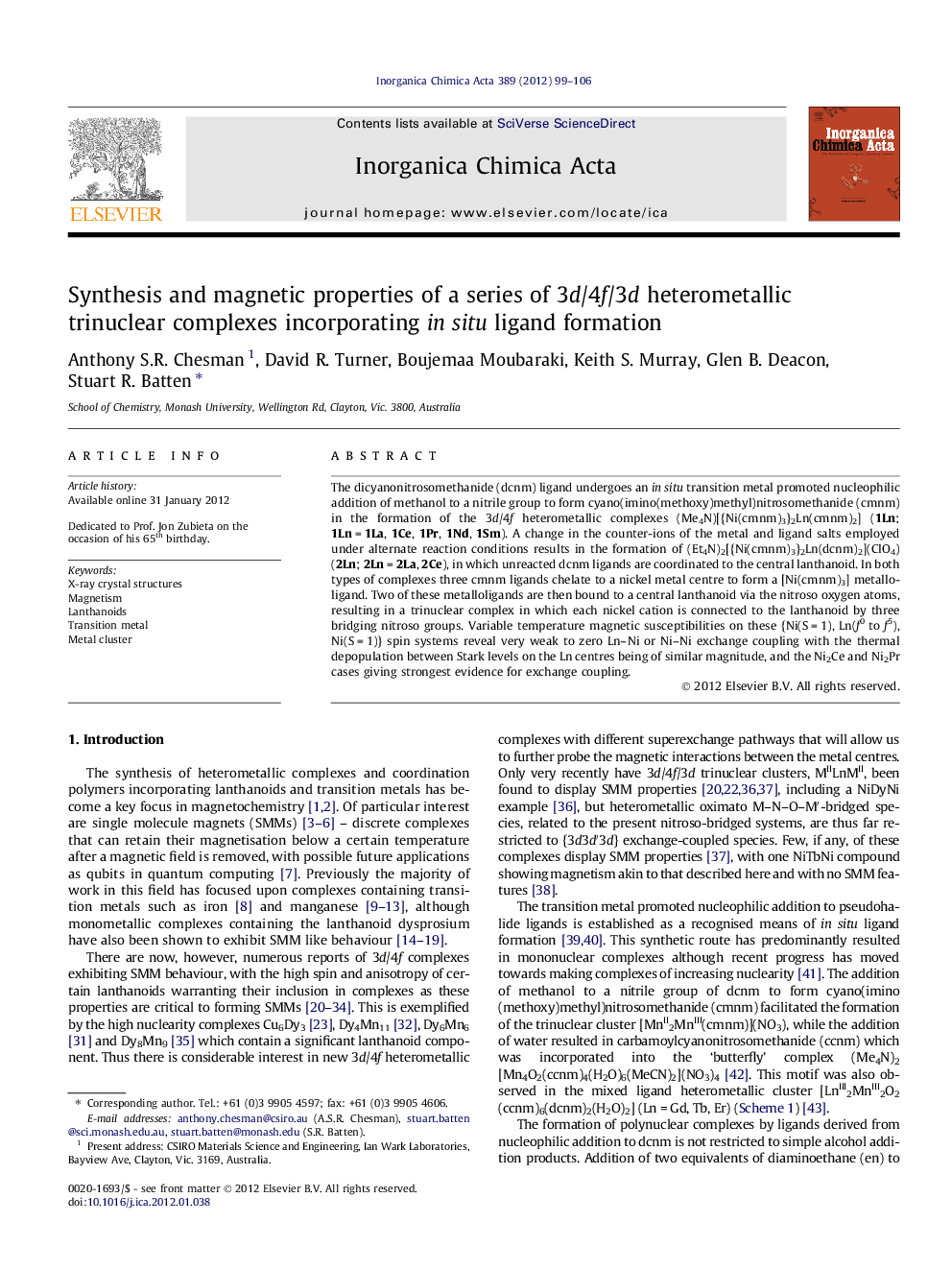| Article ID | Journal | Published Year | Pages | File Type |
|---|---|---|---|---|
| 1310796 | Inorganica Chimica Acta | 2012 | 8 Pages |
The dicyanonitrosomethanide (dcnm) ligand undergoes an in situ transition metal promoted nucleophilic addition of methanol to a nitrile group to form cyano(imino(methoxy)methyl)nitrosomethanide (cmnm) in the formation of the 3d/4f heterometallic complexes (Me4N)[{Ni(cmnm)3}2Ln(cmnm)2] (1Ln; 1Ln = 1La, 1Ce, 1Pr, 1Nd, 1Sm). A change in the counter-ions of the metal and ligand salts employed under alternate reaction conditions results in the formation of (Et4N)2[{Ni(cmnm)3}2Ln(dcnm)2](ClO4) (2Ln; 2Ln = 2La, 2Ce), in which unreacted dcnm ligands are coordinated to the central lanthanoid. In both types of complexes three cmnm ligands chelate to a nickel metal centre to form a [Ni(cmnm)3] metalloligand. Two of these metalloligands are then bound to a central lanthanoid via the nitroso oxygen atoms, resulting in a trinuclear complex in which each nickel cation is connected to the lanthanoid by three bridging nitroso groups. Variable temperature magnetic susceptibilities on these {Ni(S = 1), Ln(f0 to f5), Ni(S = 1)} spin systems reveal very weak to zero Ln–Ni or Ni–Ni exchange coupling with the thermal depopulation between Stark levels on the Ln centres being of similar magnitude, and the Ni2Ce and Ni2Pr cases giving strongest evidence for exchange coupling.
Graphical abstractThe dicyanonitrosomethanide (dcnm) ligand undergoes an in situ transition metal promoted nucleophilic addition of methanol to a nitrile group to form cyano(imino(methoxy)methyl)nitrosomethanide (cmnm) in the formation of the 3d/4f/3d heterometallic complexes (Me4N)[{Ni(cmnm)3}2Ln(cmnm)2] (1Ln; 1Ln = 1La, 1Ce, 1Pr, 1Nd, 1Sm) and (Et4N)2[{Ni(cmnm)3}2Ln(dcnm)2](ClO4) (2Ln; 2Ln = 2La, 2Ce). Variable temperature magnetic susceptibilities reveal very weak to zero Ln–Ni or Ni–Ni exchange coupling.Figure optionsDownload full-size imageDownload as PowerPoint slideHighlights► In situ synthesis of ligands via nucleophilic addition of methanol across nitrile groups. ► Heterometallic 3d/4f/3d trinuclear complexes formed. ► Very weak to zero Ln–Ni or Ni–Ni magnetic exchange coupling.
